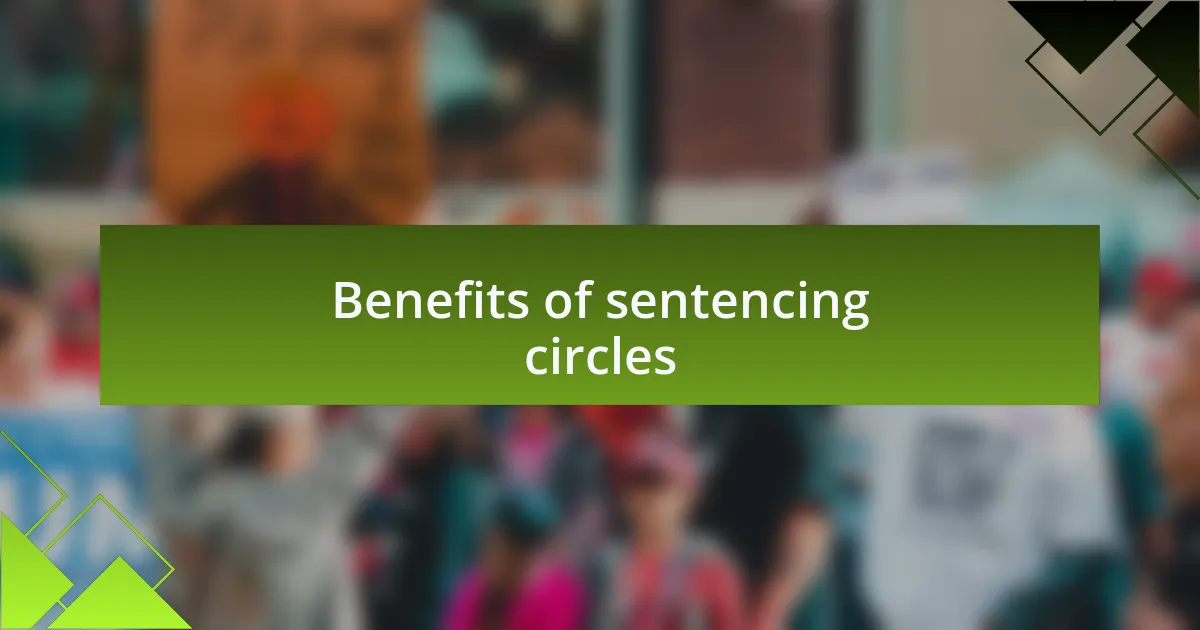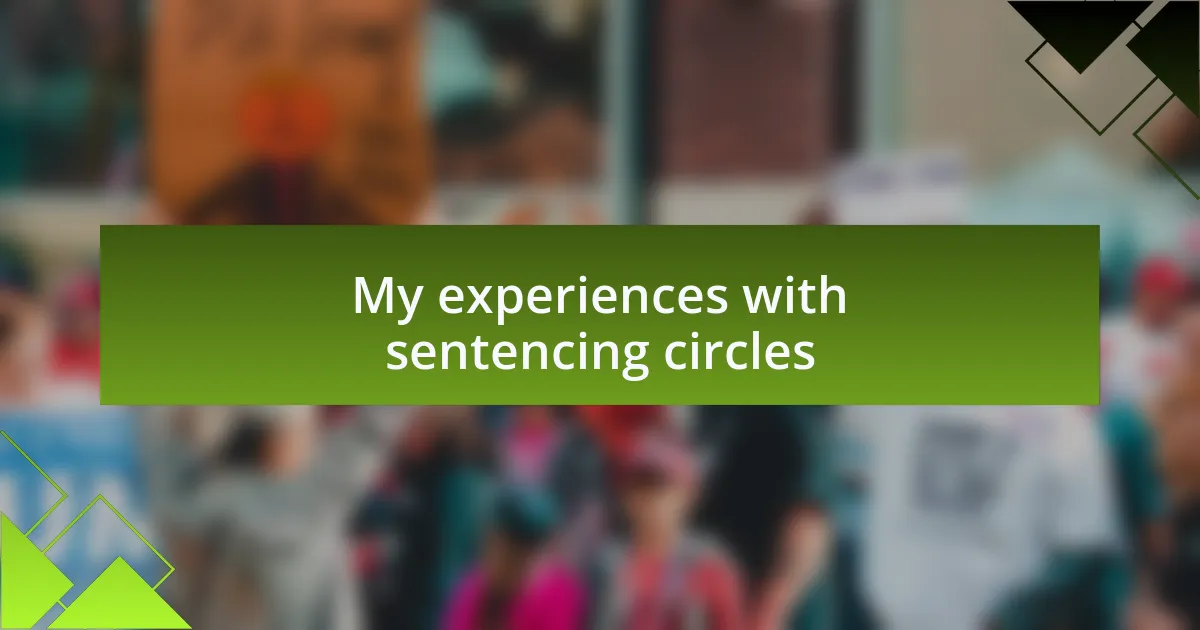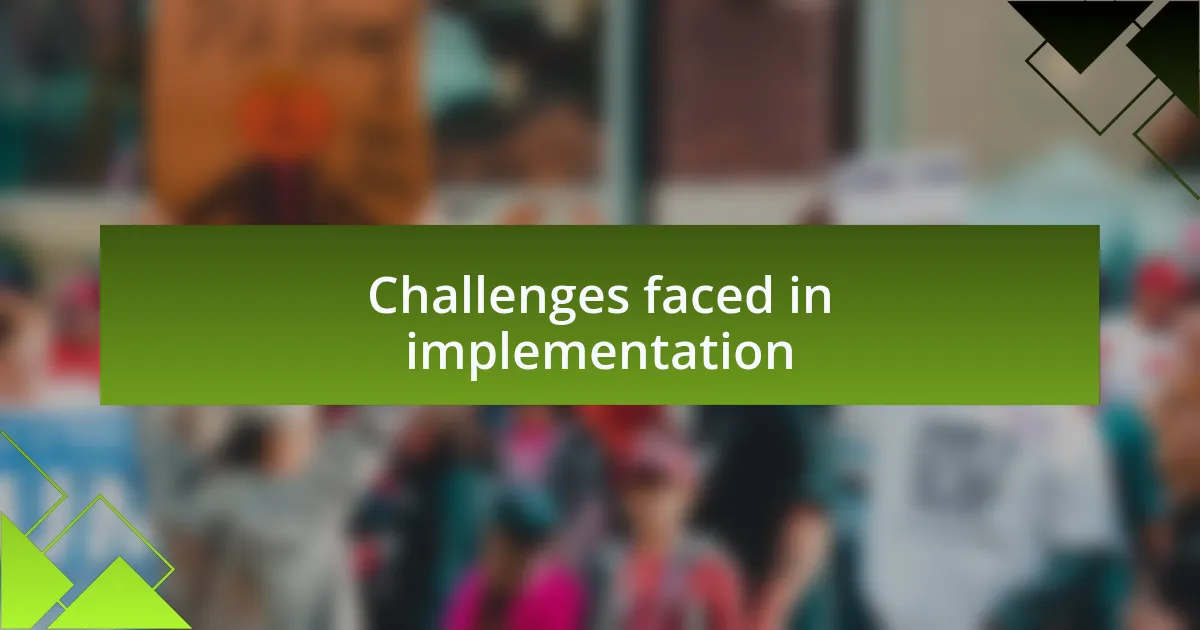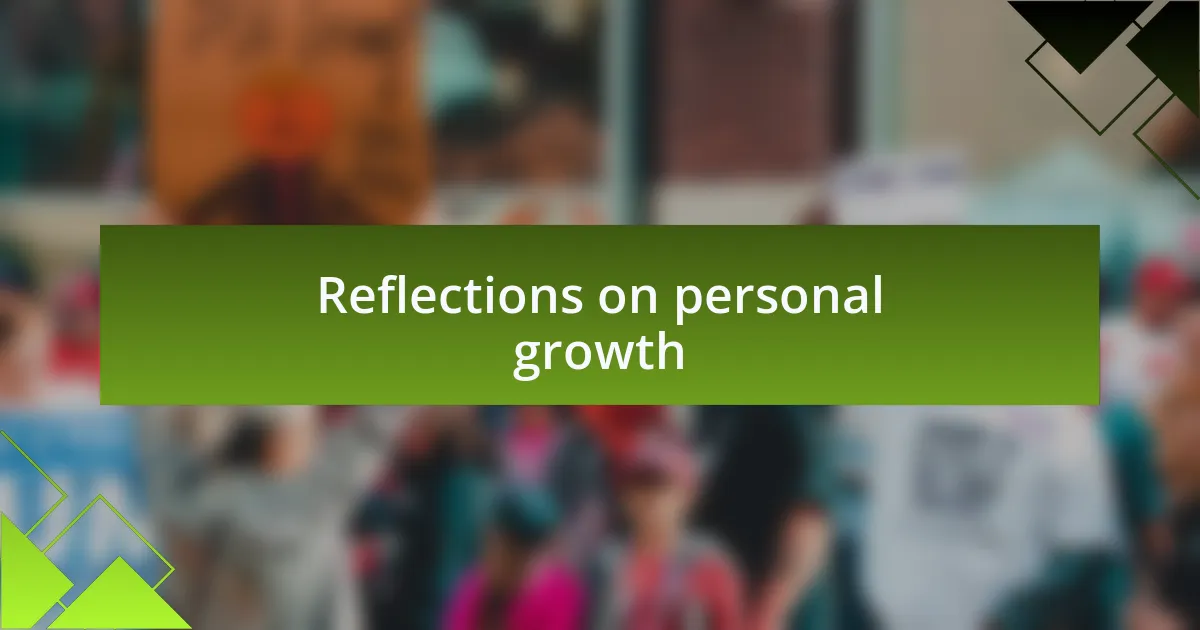Key takeaways:
- Sentencing circles foster open dialogue among offenders, victims, and communities, emphasizing healing over punishment and allowing for genuine empathy and accountability.
- The approach promotes community involvement, leading to tailored resolutions that address root causes of behavior and strengthen community ties.
- Challenges include skepticism from traditional legal systems, the need for diverse participation, and ensuring trained facilitators maintain effective group dynamics.
- Personal growth arises from engaging in these circles, fostering empathy, understanding, and the importance of creating vulnerable spaces for sharing experiences.

Understanding sentencing circles
Sentencing circles are a fascinating approach to justice, rooted in Indigenous traditions. From my experience, attending one brought a palpable sense of community—the offender, victims, and their families all participated in a dialogue. It makes you wonder, how often do we create space for open conversations about accountability and healing in traditional court settings?
In these circles, the focus shifts from punishment to healing. I remember witnessing the transformation in one young man’s demeanor as he expressed remorse in front of his victims. Has anyone ever considered how powerful it is to see genuine empathy in a process that typically feels so cold and transactional?
What intrigued me is how these circles empower the community to be an active participant in the justice process. I noticed that the sense of ownership over the outcomes is shared, leading to more thoughtful consequences. Isn’t it powerful to think that restorative justice can not only help the individual but also mend the fabric of the community?

Importance of anti-death penalty
The importance of opposing the death penalty cannot be overstated. Personally, I’ve seen how this stance reflects a society’s commitment to valuing human life and dignity. When we reject capital punishment, we send a powerful message that healing and rehabilitation, rather than irreversible punishment, should be our priority.
One poignant experience I had was attending a conference where a former death row inmate recounted his time in prison. His story of redemption and change struck me deeply. It made me realize how easily society can overlook the potential for growth in individuals, often assuming that a person’s past defines their future. Aren’t we more than our worst mistakes?
Moreover, discussing the anti-death penalty movement reveals deep social inequalities. Research indicates that socioeconomic status and race profoundly influence who receives a death sentence. I’ve often found myself reflecting on the responsibility we all share in addressing these disparities. If we aspire to justice, shouldn’t it be equitable and compassionate for all?

Overview of sentencing circle process
The sentencing circle process is a unique approach rooted in Indigenous traditions, aimed at addressing the needs of both the victim and the offender. In my observations, these circles involve the community coming together to discuss the harm caused by the crime and to collaboratively determine an appropriate response. This inclusive dialogue fosters a sense of accountability and offers a forum for healing, rather than merely punishing the offender.
During one of the community discussions I attended, the atmosphere was charged with emotion as family members shared their experiences. It struck me how each voice added depth to the conversation, highlighting the collective impact of the crime. This engagement not only aids in repairing relationships but also encourages offenders to take personal responsibility in a meaningful way. How often do we see traditional justice systems allowing such a rich dialogue?
At its core, the sentencing circle process emphasizes restoration over retribution, allowing participants to explore the underlying issues that contributed to the criminal behavior. I have found that this approach often leads to more sustainable outcomes, as individuals can rebuild their lives while also addressing their past actions’ effects on others. Isn’t it fascinating to consider how fostering dialogue can create such transformative experiences for everyone involved?

Benefits of sentencing circles
The benefits of sentencing circles often manifest as a profound opportunity for healing. I remember witnessing a case where the victim’s family shared their pain in front of the offender. The tears flowed, and there was a palpable shift in the room. This wasn’t just about punishment; it was about understanding the full scope of the crime’s impact. How often do we get to see such authentic connections formed in traditional court settings?
Community involvement is another invaluable aspect of sentencing circles. In one session I attended, neighbors who had previously been strangers were able to support each other’s emotions and stories. It was heartwarming to see people unite, creating a strong network of support. This collective approach not only aids in individual rehabilitation but strengthens community ties. Isn’t it remarkable how communal healing can reshape the narrative surrounding crime?
Moreover, the collaborative nature of sentencing circles often leads to more tailored resolutions. I’ve seen circles come up with creative and restorative agreements that address the root causes of behavior—like requiring the offender to participate in community service projects that resonate with their situation. Isn’t it encouraging that solutions can come from the individuals affected, rather than being handed down from a distant authority? This involvement leads to deeper accountability and a lasting impact that punishment alone rarely achieves.

My experiences with sentencing circles
I remember my first experience with a sentencing circle like it was yesterday. The tension in the air was thick as I sat with community members, some visibly anxious, others determined. When it was time for the offender to speak, I was struck by the depth of emotion in their voice. They didn’t just offer an apology; they expressed genuine remorse and a desire to make amends. It was a humble moment that showcased how this process was different—more personal than traditional courts, fostering an atmosphere where real accountability could take shape.
One session particularly stands out to me. We were sitting in a circle, and a young woman shared her story: her brother had been a victim of a crime. As she spoke, it became clear not only how much her loss affected her but how it reverberated through her family and friends. Tears filled her eyes, and I couldn’t help but feel the weight of her words. This experience underscored the importance of allowing victims to be heard, transforming their pain into a powerful narrative that demanded recognition and understanding.
As I reflect on these encounters, I realize they often lead to unexpected outcomes. In a session I attended, an offender suggested a community solution that aligned perfectly with their skills—creating a mural to beautify a neglected area of town. This kind of initiative illustrates a profound moment of growth and connection. How often do we witness such creativity blooming from the ashes of conflict? Witnessing this gave me hope; it highlighted that through these circles, we can foster not just rehabilitation for offenders, but also healing for victims, families, and the community as a whole.

Challenges faced in implementation
Implementing sentencing circles can be challenging due to resistance from traditional legal systems. I recall a discussion where some legal professionals voiced skepticism about the efficacy of such circles, viewing them as too lenient. It made me ponder: how can we shift the perception that these circles undermine justice when, in reality, they offer a more nuanced approach to accountability?
Another hurdle is ensuring participation from all community members. During one session, we struggled to find representation from certain demographics, particularly those affected by the crime being discussed. This absence made me realize how vital it is to bridge those gaps—without diverse voices, we miss out on critical perspectives that could enrich the process. How can we encourage a more inclusive atmosphere where everyone feels valued?
Finally, maintaining consistency in facilitation is crucial yet difficult. I recall a session that was thrown off by an untrained facilitator who didn’t manage the group dynamic effectively. Witnessing the lack of structure left me unsettled, as it became clear that the potential for healing was overshadowed by their inexperience. It raises the question: how can we ensure facilitators are not only trained but also continuously supported in their roles to maximize the circles’ impact?

Reflections on personal growth
Personal growth often stems from the challenges we encounter, and my experiences with sentencing circles have been no exception. I vividly remember a session where I felt overwhelmed by the emotional weight of the discussions. It forced me to confront my own biases and beliefs about justice. In those moments, I learned that being open to differing viewpoints can not only foster personal growth but also enhance our collective understanding of accountability.
As I reflected on my role in these circles, I recognized how vital it is to create a space for vulnerability. There was a particular instance when a participant shared a heartbreaking story about their loved one and the impact of crime on their family. It struck me deeply and prompted me to think: how often do we allow ourselves to truly listen and feel the weight of another’s experience? These reflections have shaped my approach, reminding me that personal growth is not just about developing ideas; it’s about nurturing empathy and understanding among one another.
Another revelation came when I took on the responsibility of facilitating a circle. Initially, I was filled with self-doubt, questioning whether I was equipped to lead such important conversations. However, as I navigated through the discussions, I found myself growing more confident. It made me consider the value of stepping out of our comfort zones: what if taking risks in unfamiliar territories is the very catalyst for transformation? I believe that every experience in these circles contributes to our collective and individual growth, showing us that learning is a lifelong journey.